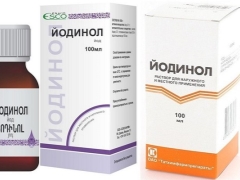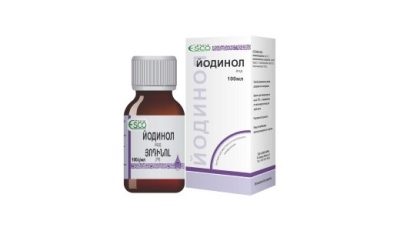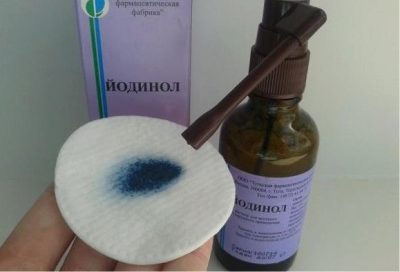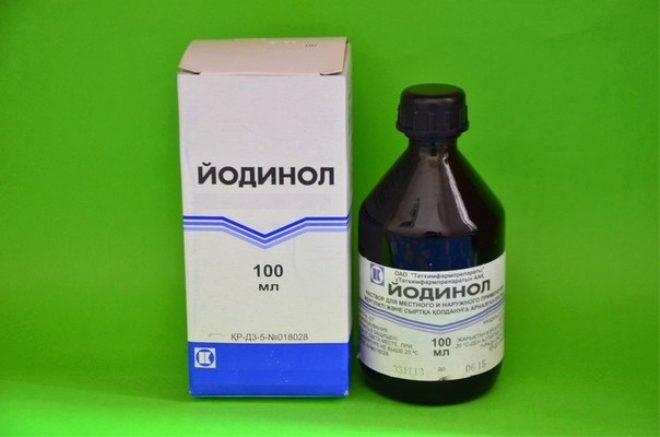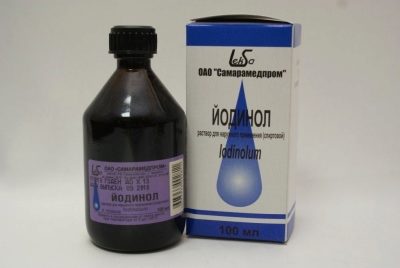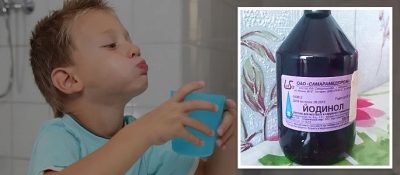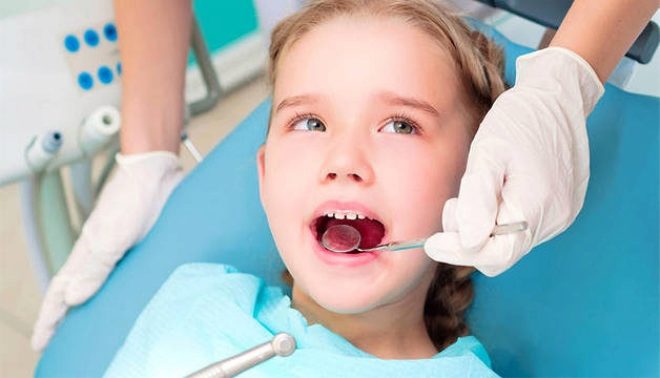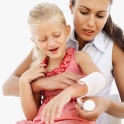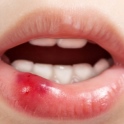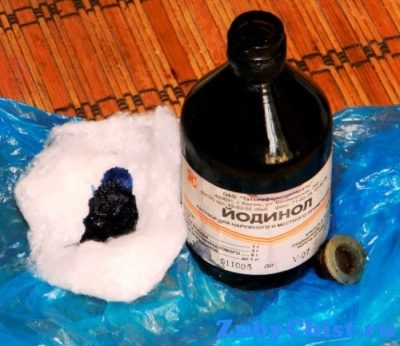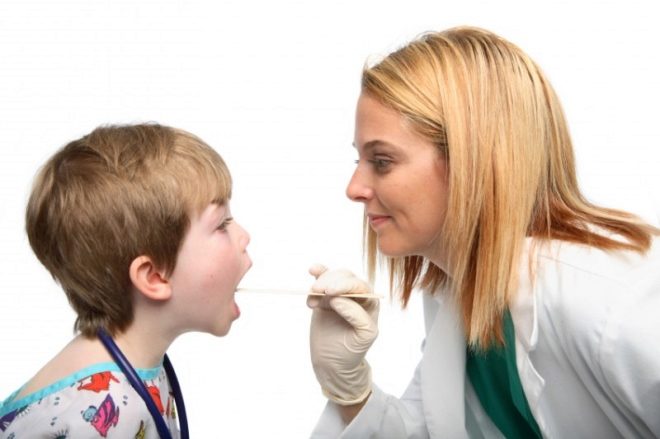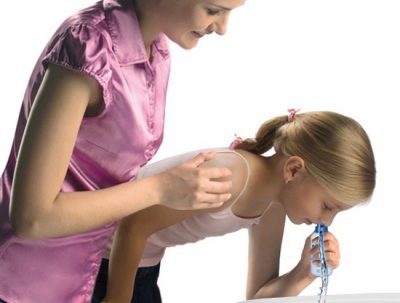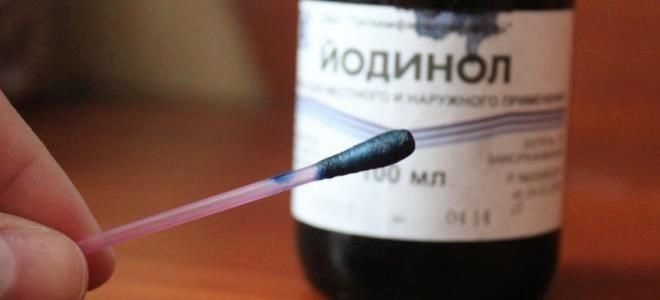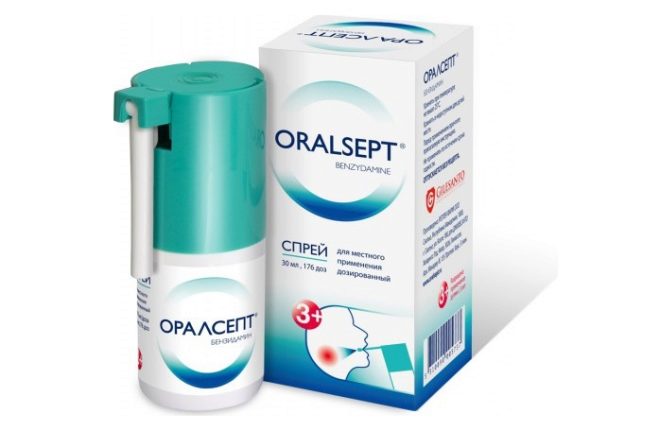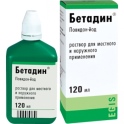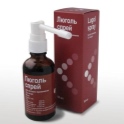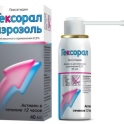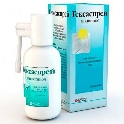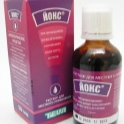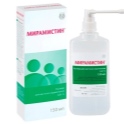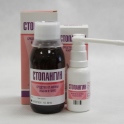Iodinol children: instructions for use
Among the antiseptics that are used topically, Iodinol is highly in demand. How does such a drug work on the child's body, when it is used in children and with what medicines with a similar therapeutic effect can it be replaced?
Release form
The drug is a solution that is used externally and locally. It is a dark blue liquid that has a peculiar smell. Usually it is transparent, but if you shake the bottle, then foam will form. One bottle contains 100 ml of solution.
Composition
The effect of the solution is due to the three active substances:
- Crystalline iodine.
- Potassium iodide.
- Polyvinyl alcohol.
The remainder of the preparation is represented by purified water. There are no other auxiliary ingredients in Iodinol.
Operating principle
The drug belongs to the antiseptic, acting by the presence of molecular iodine. This component causes the bactericidal effect when treated with Iodinol. It destroys both gram-positive and gram-negative bacteria.
Especially active drug against streptococci and Escherichia coli. It acts on yeast and many pathogenic fungi. Against the blue of the solution of pseudomonasal agent powerless
Due to the addition of polyvinyl alcohol to the composition, the duration of the effect of the drug after treatment increases, because iodine is released more slowly due to this high-molecular substance. In addition, this component of the solution prevents the irritation of tissues under the influence of crystalline iodine.
Indications
Use of Yodinol is claimed:
- When purulent form otitis.
- With the atrophic form of rhinitis.
- With trophic ulcers on the skin, as well as ulcerative lesions caused by varicose veins.
- In chronic periodontitis.
- With chronic tonsillitis.
- In case of burns - both chemical and thermal.
- With surgical pathologies with the formation of pus.
At what age is it allowed to take?
The instruction recommends using Iodinol at children's age from 6 years. If you need a local remedy for younger children (for example, for 2 years), you should consult with your doctor and find a medicine that is allowed for their age.
And now a small issue on the benefits and use of blue iodine.
Contraindications
The solution can not be used:
- With his individual intolerance.
- When hyperthyroidism.
Side effects
If the child has iodine intolerance, the use of the solution can cause a runny nose, a burning sensation at the treatment site, skin rashes and other allergic reactions.
Instructions for use and dosage
- If a child has tonsillitis in a chronic form, then washing the tonsil area with 50 milliliters of solution is prescribed for one procedure. This gargling is performed 4-5 times a day. Re-washing is appointed every 2-3 days.
- In case of fetid rhinitis, softened crusts are first removed from the nose, and then the nasal cavity, as well as the throat, is irrigated with Yodinol. The drug is advised to drip 2 or 3 times a week. This treatment lasts for 2-3 months.
- If a child has purulent otitis, 5 to 8 drops of medication are instilled into the ear daily for 2-4 weeks.
- For ulcers on the surface of the skin, lotions with iodinol are used. For them, wetted gauze wipes are used.They are applied to the affected area and soaked with medicine 1-2 times a day.
- Burns and purulent wounds are treated with gauze dressings using the drug.
Overdose
Too much or too much use can lead to increased saliva, urticaria, rhinitis, tissue swelling and other negative symptoms. Their occurrence should be the reason for seeking medical attention.
Interaction with other drugs
Not recommended for simultaneous use with any disinfectant preparations, for example, with hydrogen peroxide.
Terms of sale and storage
The drug is referred to over-the-counter drugs, so it is available to any buyer in almost all pharmacies. The average price of 1 bottle is 12-20 rubles.
To store the medicine, it is recommended to find a cool place inaccessible to the rays of the sun and small children. Do not freeze the medication. Shelf life of Iodinol is 3 years.
Reviews
About solution Iodinol speak, as an effective and inexpensive means that helps well with otitis, rhinitis, sore throat and other diseases. In most cases, the drug is praised, because it does not pinch and does not stain the skin, which distinguishes it from brilliant green or other iodine preparations. Among the shortcomings of the mother sometimes mention the occurrence of allergies and uncomfortable to use the bottle.
Analogs
The following medicines can be used instead of Iodinol:
- Solution Betadine. Its antiseptic effect is due to povidone-iodine. This preparation can treat the skin even in infants (the drug is allowed at the age of more than 1 month).
- Spray or solution Hexoral. The active component of such an antiseptic is hexatidine. The drug is used for stomatitis, sore throat, tonsillitis, gingivitis, oral candidiasis and other problems in children older than 3 years.
- Solution Stopangin. Such a drug based on hexatidine is allowed from the age of six. It is effective for sore throat caused by angina, as well as lesions of the oral mucosa.
- Solution yoks. As part of this drug, povidone-iodine is combined with allantoin. It is used for irrigation of the pharynx and oral cavity of children over 6 years of age. The drug is also produced in the form of a spray, but this tool is allowed from 8 years.
- Spray Lugol. The antiseptic effect of this popular remedy is associated with the presence of iodine in its composition. The drug is prescribed to children 5 years and older.
- Spray can Hexasprey. The basis of this tool is biclotymol, which has an antimicrobial effect. The drug is used for sore throats, glossitis, laryngitis, stomatitis and other diseases. In pediatrics, he is allowed from 6 years.
- Miramistin. This strong antiseptic drug is in demand for bacterial rhinitis, adenoids, sinusitis, purulent otitis, skin lesions and other problems. It is prescribed to children older than 3 years and is often used for inhalation of cough (for the procedure, the drug must be diluted with saline).
- Spray Oralsept. Treatment with such an antiseptic containing benzydamine is permitted from 3 years of age. It is especially often used for stomatitis, tonsillitis and in dentistry.
You can learn more about antiseptics by looking at Dr. Komarovsky’s program.
